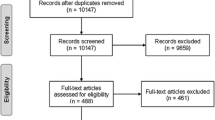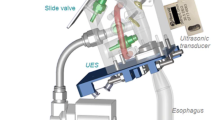Abstract
The objective of this study was to examine the relationships among three categories of measurements (rheological, sensory texture, and swallowing pressure) from fluids thickened to two different viscosities with 15 different hydrocolloids. Fluids at viscosities of 300 and 1500 cP (at 30 s−1) were targeted because these are the viscosities corresponding to the barium standards used in radiographic dysphagia diagnosis. Within the low viscosity (nectar) fluids (300 cP), the sensory properties thickness, stickiness, adhesiveness, mouth coating, and number of swallows were highly positively correlated with each other and highly positively correlated with the flow behavior index, n value (an indicator of shear-thinning behavior). Within the higher viscosity (thin honey) fluids (1500 cP), the sensory textures of adhesiveness, stickiness, mouth coating, and number of swallows correlated positively with rheological measures of n value. Swallowing pressures measured in the anterior oral cavity correlated negatively with the consistency coefficient k [shear stress/(shear rate)n]. Samples that were more shear thinning (lower n values, higher k values) were generally perceived as less thick, with less adhesive properties (stickiness, adhesiveness, mouthcoating, and number of swallows). This information can be useful for selecting thickeners for people with dysphagia. A desirable thickener for many dysphagic patients would be one that allowed for a safe swallow by being viscous enough to reduce airway penetration, yet pleasant to drink, having the minimal perceived thickness and mouthcoating associated with greater shear thinning.






Similar content being viewed by others
References
Roy N, Stemple J, Merrill RM, Thomas L. Dysphagia in the elderly: preliminary evidence of prevalence, risk factors, and socioemotional effects. Ann Otol, Rhinol Laryngol. 2007;116(11):858–65.
Adeleye B, Rachal C. Comparison of the rheological properties of ready-to-serve and powdered instant food-thickened beverages at different temperatures for dysphagic patients. J Am Diet Assoc. 2007;107:1176–82.
Lotong V, Chun S, Chambers E, Garcia J. Texture and flavor characteristics of beverages containing commercial thickening agents for dysphagia diets. J Food Sci. 2000;68(4):1537–41.
Macqueen CE, Taubert S, Cotter D, Stevens S, Frost GS. Which commercial thickening agent do patients prefer? Dysphagia. 2003;18(1):46–52.
Matta Z, Chambers E IV, Garcia JM, Helverson JMG. Sensory characteristics of beverages prepared with commercial thickeners used for dysphagia diets. J Am Diet Assoc. 2006;106(7):1049–54.
Pelletier CA, Lawless HT. Measuring taste acceptance in neurologically impaired adults. Food Qual Prefer. 2003;14(7):595–602.
Whelan K. Inadequate fluid intakes in dysphagic acute stroke. Clin Nutr. 2001;20(5):423–8.
Mills R. Rheology overview: control of liquid viscosities in dysphagia management. Nutr Clin Pract. 1999;14(5, suppl):S52–6.
Pelletier CA. A comparison of consistency and taste of five commercial thickeners. Dysphagia. 1997;12(2):74–8.
Stanek K, Hensley C, Van Riper C. Factors affecting use of food and commercial agents to thicken liquids for individuals with swallowing disorders. J Am Diet Assoc. 1992;92:488–90.
Crary MA, Groher ME. Introduction to adult swallowing disorders. St Louis: Butterworth-Heinemann; 2003.
Huckabee ML, Pelletier CA. Management of adult neurogenic dysphagia. San Diego: Singular Group Inc; 1999.
Nishinari K, Takemasa M, Su L, Michiwaki Y, Mizunuma H, Ogoshi H. Effect of shear thinning on aspiration—toward making solutions for judging the risk of aspiration. Food Hydrocoll. 2011;25(7):1737–43.
Wood FW. Psychophysical Studies on the consistency of liquid foods. Rheology and Texture of Foodstuffs, SCI Monograph, (1968). No. 27, p. 40.
National Dysphagia Diet Task Force. National dysphagia diet: standardization for optimal care. Chicago: American Dietetic Association; 2002.
OuldEleya MM, Gunasekaran S. Rheology of fluid foods for dysphagic patients. Appl Rheol. 2007;17:33137.
Payne C, Methven L, Bell A. Consistently inconsistent: commercially available starch-based dysphagia products. Dysphagia. 2009;26(1):27–33.
Brito-de la Fuente E, Ekberg O, Gallegos C. Rheological Aspects of Swallowing and Dysphagia. In: Eckberg O, editor. Dysphagia: diagnosis and treatment. New York: Springer; 2012. p. 493–506.
Rao MA. Rheology of liquid foods—a review. J Texture Stud. 1977;8(2):135–68.
Steffe JF. Rheological methods in Food Process Engineering. 2nd ed. East Lansing: Freeman Press; 1996.
Bourne MC. Food texture and viscosity concept and measurement. 2nd ed. San Diego: Academic Press; 2002. p. 257–80.
Szczesniak A. Psychorheology and texture as factors controlling the consumer acceptance of food. Cereal Foods World. 1990;35:1201–5.
Carvalho-da-Silva AM, Van Damme I, Wolf B, Hort J. Characterisation of chocolate eating behaviour. Physiol Behav. 2011;104:929–33. doi:10.1016/j.physbeh.2011.06.001.
Szczesniak AS. Classification of Textural Characteristics. J Food Sci. 1963;28(4):385–9.
Kokini J, Kadane J, Cussler E. Liquid texture perceived in the mouth. J Texture Stud. 1977;8(2):195–218.
Aime D, Arntfield S, Malcolmson L, Ryland D. Textural analysis of fat reduced vanilla ice cream products. Food Res Int. 2001;34:237–46.
Carvalho-da-Silva AM, Van Damme I, Taylor W, Hort J, Wolf B. Oral processing of two milk chocolate samples. Food Funct. 2013;4(3):461–9.
Hind JA, Nicosia MA, Gangnon R, Robbins JA. The effects of intraoral pressure sensors on normal young and old swallowing patterns. Dysphagia. 2005;20(4):249–53.
Miller JL, Watkin KL. The influence of bolus volume and viscosity on anterior lingual force during the oral stage of swallowing. Dysphagia. 1996;11(2):117–24.
Pouderoux P, Kahrilas PJ. Deglutitive tongue force modulation by volition, volume, and viscosity in humans. Gastroenterology. 1995;108(5):1418–26.
Shaker R, Cook IJS, Dodds WJ, Hogan WJ. Pressure-flow dynamics of the oral phase of swallowing. Dysphagia. 1988;3(2):79–84.
Nicosia MA, Hind JA, Roecker EB, Carnes M, Doyle J, Dengel GA, Robbins JA. Age effects on the temporal evolution of isometric and swallowing pressure. J Gerontol Ser A. 2000;55(11):M634–40.
Hootman RC. Manual on descriptive analysis testing for sensory evaluation. Philadelphia: ASTM International; 1992. p. 52.
MacFie HJ, Bratchell N, Greenhoff K, Vallis LV. Designs to balance the effect of order of presentation and first-order carry-over effects in hall tests. J Sens Stud. 1989;4(2):129–48.
Scott M, Hill F, Norris L, Heuser G. Chemical determination of riboflavin. J Biol Chem. 1946;165(1):65–71.
Shama F, Sherman P. Identification of stimuli controlling the sensory evaluation of viscosity II. Oral methods. J Texture Stud. 1973;4(1):111–8.
Engmann J, Burbidge AS. Fluid mechanics of eating, swallowing and digestion—overview and perspectives. Food Funct. 2013;4:443.
Cutler AN, Morris ER, Taylor LJ. Oral perception of viscosity in fluid foods and model systems. J Texture Stud. 1983;14:377–95.
Sherman P. Hydrocolloid solutions and gels. Sensory evaluation of some textural characteristics and their dependence on rheological properties. Prog Food Nutr Sci. 1982;6:266–84.
Stokes JR. Oral? rheology. Food oral processing. Oxford: Wiley-Blackwell; 2012. p. 225–63. doi:10.1002/9781444360943.ch11.
Nicosia MA. Theoretical estimation of shear rate during the oral phase of swallowing: effect of partial slip. J Texture Stud. 2013;. doi:10.1111/jtxs.12005.
Houska M, Valentova H, Novotna P, Strohalm J, Sestak J, Pokorny J. Shear rates during oral and nonoral perception of viscosity of fluid foods. J Texture Stud. 1998;29(6):603–15.
Hasegawa A, Otoguro A, Kumagai H, Nakazawa F. Velocity of swallowed gel food in the pharynx by ultrasonic method. J Jpn Soc Food Sci Technol. 2005;52:441–7.
Rao MA, Lopes da Silva JA. Role of rheological behavior in sensory assessment of foods and swallowing. In: Rao MA, editor. Rheology of fluid and semisolid foods: principals and applications. Second ed. New York: Springer; 2007. p. 403–17.
O’Leary M, Hanson B, Smith C. Viscosity and non-Newtonian features of thickened fluids used for dysphagia therapy. J Food Sci. 2010;75(6):E330–8.
Acknowledgments
This project was supported by National Research Initiative Grant 12143 from the USDA Cooperative state Research, Education and Extension Service, and the Wm. S. Middleton Memorial Veterans Hospital Geriatric Research, Education and Clinical Center (GRECC). This manuscript was partially prepared at the William S. Middleton Veteran Affairs Hospital in Madison, WI; GRECC manuscript #2015-015. The views and content expressed in this article are solely the responsibility of the authors and do not necessarily reflect the position, policy, or official views of the Department of Veteran Affairs or the U.S. government. This research was partly supported by the Minnesota Agricultural Experiment Station.
Author information
Authors and Affiliations
Corresponding author
Electronic supplementary material
Below is the link to the electronic supplementary material.
Rights and permissions
About this article
Cite this article
Vickers, Z., Damodhar, H., Grummer, C. et al. Relationships Among Rheological, Sensory Texture, and Swallowing Pressure Measurements of Hydrocolloid-Thickened Fluids. Dysphagia 30, 702–713 (2015). https://doi.org/10.1007/s00455-015-9647-9
Received:
Accepted:
Published:
Issue Date:
DOI: https://doi.org/10.1007/s00455-015-9647-9




